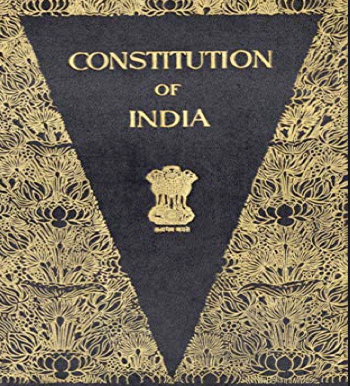Is Constitution for Religion and not for Dharma?


The word for independence is Swa-tantra, which is not just about being not dependent, it means self-governance. One of the major man-made documents meant for self-governance of our nation which is amended regularly is the Constitution. The very fact that the document requires to be amended vouches for the non-static nature of the piece of work. You can’t be “swa+tantra” until you have a governance document representing the dharmas of the native population.
CJI Ramana called for Indianisation of the country’s legal system recently. It is important to note that the elected governments play to the requirements of the vote bundles, whereas judiciary is supposed to put the checks and balances as much as the Constitution provides for. Turns out, that the Constitution document is unable to capture the vast diversity within the Indian dharmas. Several Indian dharmic non-translatables are dumbed down to Abrahamic streamlining by interpretation in the ill-equipped English language.
RELIGION IS NOT DHARMA: Religion is a set of organised system based on beliefs in a God or Gods. These systems often culminate into non-acceptance of existence of any other Gods or dharmas. It goes further into achievement of mob objectives, adversely being conversion and takeover, often with a blanket separation of treatment between believers and non-believers. These come from the “Aadesh” philosophy of strict commandments to define someone is a believer or not.
On the contrary, the Indian dharmas are all about individual seeking of liberation. The seeking is for the individual to decide based on his own interpretations and capacities. The dharmas come from the “Updesh” philosophy of recommendations. The four Indian dharmas are all encompassing, living, non-living and the entire universe. You can tell the dharma of water and that of fire. You can’t spell out their religions.
TEMPLE IS NOT MANDIR: Temple is a place of worship. Man+dir is a place where you elevate your inner-self.
Mandirs have been university campuses, centre for feeding prasad-food to the people, centres of art, research, medicine and so on. The vihaaras between ancient mandirs were student-faculty exchange and research programs. Each mandir has several different kinds of objectives based on the supreme values represented by which Bhagwaan’s pran-pratishtha is done.
PRAYER AND WORSHIP ARE NOT POOJA, ANUSHTHAAN, YAGYA OR AARTI: The word prayer has its root origin from asking material things and asking forgiveness of the sins. Prayer can be done anywhere in a temple, in front of a teacher or in a court of law and so on.
Pooja, Anushthaan, Yagya and Aarti are completely different from prayer or worship. The Indian dharmas are about seeking spirituality and individual liberation. One cannot ask for material things while seeking liberation.
GOD IS NOT BHAGWAAN: There is no concept of God in the Indian dharmas. Indian dharmas are about seeking the supreme values represented by the Bhagwaan. Indian Bhagwaans aren’t some forces which exist at some unknown place like Gods of religions. Indian dharmas point out that the element of supreme is within each of us and everywhere. Indian dharmas do not come from the “God-follower” concept of worship.
Religion is about believing in a God-fearing life. Indian dharmas are about seeking a karma-fearing life. Religions believe in the concept of one life. Indian dharmas talk about life-cycles based on your past and current karmas.
IDOL IS NOT MURTI: Idol can be of anyone and can be put up anywhere. You can put up a poster or idol of a politician, sportsman, scientist and so on.
What we Indians do in the mandirs is not idol worship. Murti is completely different. Murti is an embodied physical representation of the Bhagwaans for seeking and invoking the divine principle they represent.
CASTE IS NOT JAATI, DHARMA, VARNA OR KULA: Caste is another western word imposed on us. Even in the West where the word originated, the occupation of people was tagged by their surnames like blacksmith, barber, porter, tailor and so on.
An occupation of a person in ancient India had nothing to do with his dharma. In absence of current format of education, the ancients did pass on skills to the next generation in the same family. This had nothing to do with a person’s birth or Jaati.
CONCLUSION: All the wrong narratives peddled about Hindus and Indian dharmas is primarily because of this infant, half-baked English language, which has no capacity to even get a clue of what this diversity is about. Unfortunately, since we borrowed the Constitution format from the West, the entire current legal framework brushes everything in one paint whenever a case comes on the Indian dharmic traditions. Be it the Places of Worship Act or the Sabarimala case or overall clubbing of Hinduism, Sikhism, Jainism and Buddhism as religions, things have gone completely for a toss in terms of interpretations by the judiciary.
In this backdrop of realisation that the Indian state does not have the capacity or the resources to even map the diversity of each of our dharmas, sampradayas and mandirs, the uni-directional application of legal framework based on western template word “religion” has to stop at the earliest.
DISCLAIMER: The author is solely responsible for the views expressed in this article. The author carries the responsibility for citing and/or licensing of images utilized within the text.
